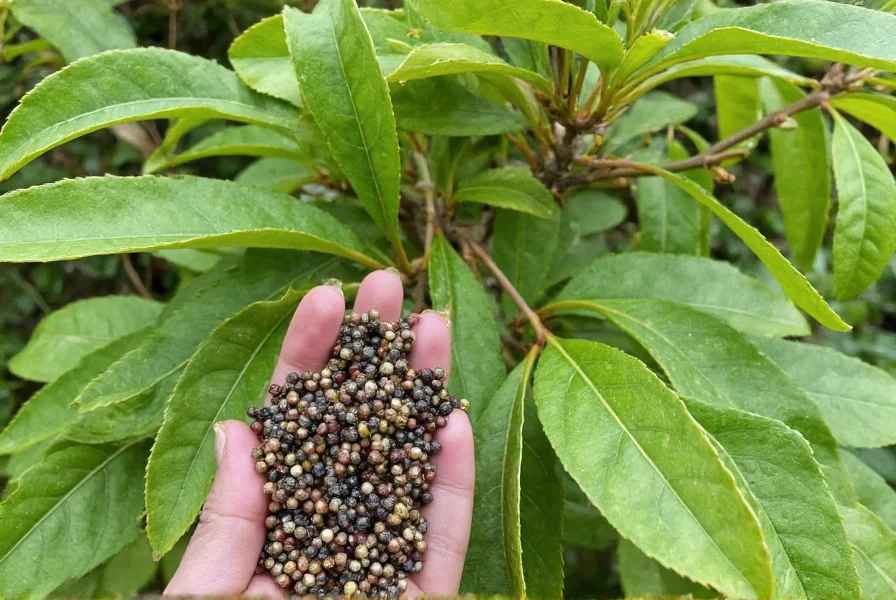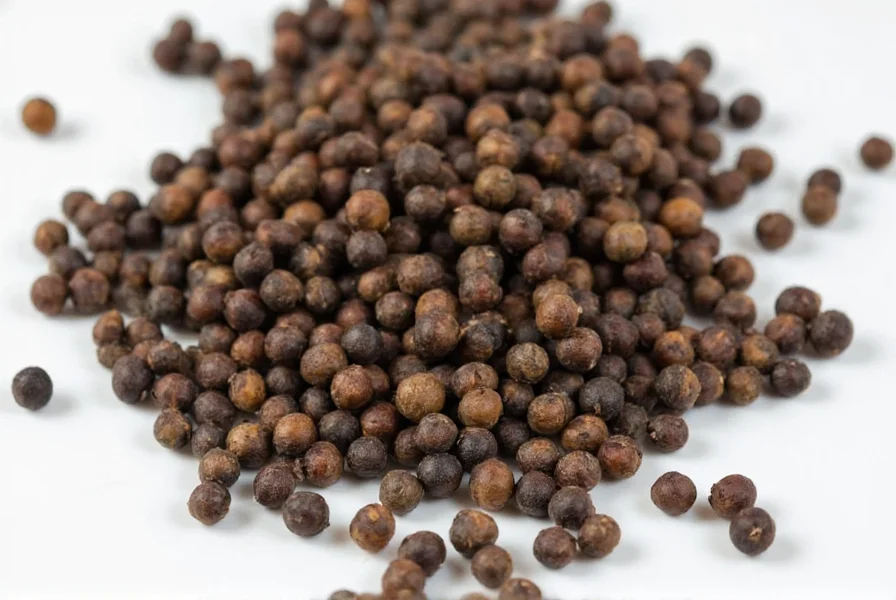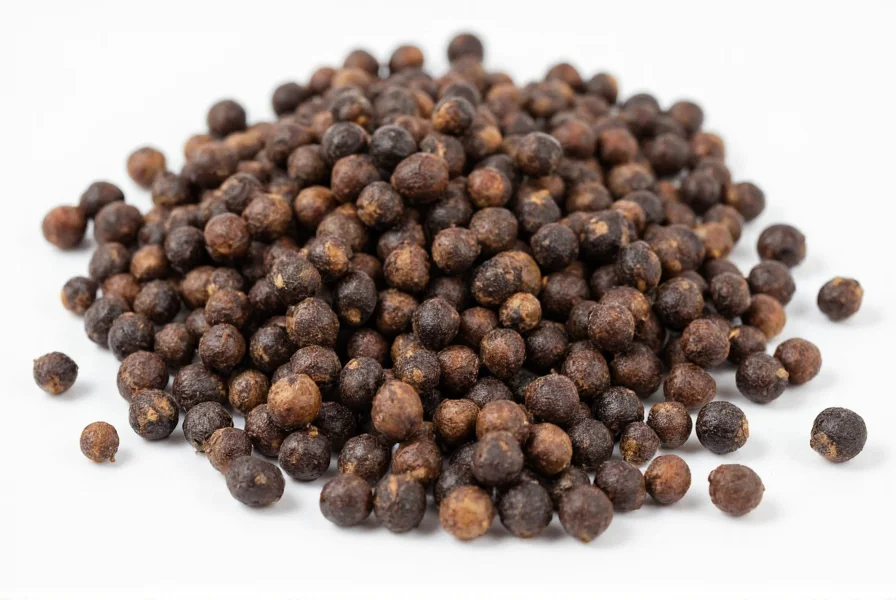For centuries, the Malabar Coast has been synonymous with high-quality black pepper production. The Piper nigrum plant, which produces peppercorns, grows as a flowering vine in this region's tropical rainforest climate. Understanding where peppercorns are native to reveals much about their historical significance and global journey.
The Botanical Origin of Peppercorns
Peppercorns aren't actually seeds but rather the dried fruit berries of the Piper nigrum plant, a perennial climbing vine belonging to the Piperaceae family. This vine requires specific growing conditions that the Western Ghats mountain range along India's Malabar Coast perfectly provides. The region's combination of high humidity, abundant rainfall, and well-drained laterite soils creates an ideal ecosystem for natural peppercorn cultivation.
Historical records indicate that pepper cultivation in Kerala dates back over 4,000 years. Ancient Sanskrit texts reference maricham, the local name for black pepper, as both a culinary spice and medicinal herb. The region's strategic coastal location allowed Indian traders to export this valuable commodity along maritime routes as early as 2000 BCE.
How Peppercorns Spread Across the Globe
The historical origin of peppercorns became globally significant through ancient trade routes. Greek and Roman merchants established direct sea routes to India's Malabar Coast specifically for pepper. By the first century CE, Roman naturalist Pliny the Elder documented that 15 metric tons of pepper arrived annually in Rome from India.
During the Middle Ages, European demand for pepper intensified, driving exploration efforts. Portuguese explorer Vasco da Gama's 1498 voyage to Calicut (now Kozhikode) in Kerala was primarily motivated by the desire to control the pepper trade. Later, the Dutch and British established colonial outposts specifically to dominate pepper production and distribution.
| Peppercorn Type | Processing Method | Native Region |
|---|---|---|
| Black Peppercorns | Sun-dried unripe berries | Malabar Coast, India |
| White Peppercorns | Ripe berries with outer layer removed | Same native region |
| Green Peppercorns | Unripe berries preserved | Same native region |
| Red Peppercorns | Ripe berries dried whole | Same native region |
Different Types of Peppercorns and Their Processing
Though all peppercorns originate from the same Piper nigrum plant, different processing methods create the various colors:
- Black peppercorns - The most common variety, created by sun-drying unripe green berries, causing them to shrivel and turn black
- White peppercorns - Made from ripe red berries with the outer layer removed through soaking
- Green peppercorns - Unripe berries preserved through freeze-drying or brining
- Red peppercorns - Fully ripe berries dried whole
Despite these variations, all types share the same native origin in southwestern India. The distinctive pungency comes from piperine, the compound responsible for pepper's characteristic heat.
Modern Peppercorn Cultivation Worldwide
While the Malabar Coast remains pepper's ancestral home, commercial cultivation has expanded globally. Today, Vietnam leads worldwide production, followed by Indonesia, India, Brazil, and Malaysia. However, Kerala's Malabar pepper still commands premium prices due to its distinctive flavor profile developed over millennia in its native environment.
The question of where peppercorns are native to matters because terroir significantly affects flavor. Peppercorns grown in their original habitat develop unique aromatic compounds influenced by Kerala's specific soil composition, rainfall patterns, and temperature ranges. This geographical specificity explains why Malabar pepper maintains its reputation as the gold standard among culinary professionals.
Cultural Significance of India's Native Pepper
In ancient Rome, pepper was so valuable it was used as currency and called "black gold." Indian kings accepted pepper as tax payments, and European explorers risked dangerous voyages seeking direct access to its source. The historical trade routes established for pepper became the foundation for global commerce networks.
Traditional Ayurvedic medicine has utilized pepper from its native region for digestive and respiratory treatments for thousands of years. The Sanskrit medical text Charaka Samhita, dating to 100 BCE, documents pepper's therapeutic applications. This deep cultural integration underscores how where peppercorns are native to shaped not just cuisine but entire medical traditions.

Preserving Native Pepper Varieties
Modern agricultural practices threaten traditional pepper varieties in their native habitat. Organizations like the Indian Council of Agricultural Research work to preserve indigenous Piper nigrum strains through germplasm banks. These conservation efforts recognize that the original genetic diversity found where peppercorns are native to represents irreplaceable agricultural heritage.
Understanding the native region of black pepper helps explain why certain cultivation practices work best. The traditional Indian method of growing pepper on supporting trees mimics its natural vine habit in Kerala's rainforests. This agroforestry approach maintains biodiversity while producing superior quality peppercorns compared to monoculture plantations.

Where exactly are peppercorns native to in India?
Peppercorns are native specifically to the Malabar Coast of southwestern India, which encompasses the present-day state of Kerala. This region's tropical climate with high humidity and abundant rainfall provides ideal conditions for the Piper nigrum vine to grow naturally.
Are all types of peppercorns native to the same region?
Yes, all peppercorn varieties—black, white, green, and red—come from the same Piper nigrum plant native to India's Malabar Coast. The different colors result from varying processing methods of the same berry, not different plant species or native regions.
How did peppercorns spread from their native region to other parts of the world?
Peppercorns spread through ancient maritime trade routes. Greek and Roman merchants established direct sea routes to India's Malabar Coast by the first century CE. Later, Portuguese explorers like Vasco da Gama reached Kerala in 1498 specifically to access pepper. Colonial powers subsequently established plantations in Southeast Asia and other tropical regions.
Why is the native region important for peppercorn quality?
The native region matters because terroir—soil composition, climate, and traditional cultivation methods—creates distinctive flavor compounds. Malabar pepper from Kerala develops unique aromatic qualities from growing in its ancestral environment, which is why it commands premium prices in culinary markets worldwide.
Can peppercorns grow outside their native region?
Yes, peppercorns can grow in other tropical regions with similar conditions to their native Malabar Coast. Vietnam, Indonesia, Brazil, and Malaysia now produce significant quantities. However, plants grown outside their native habitat often develop slightly different flavor profiles due to variations in soil, climate, and cultivation practices.











 浙公网安备
33010002000092号
浙公网安备
33010002000092号 浙B2-20120091-4
浙B2-20120091-4